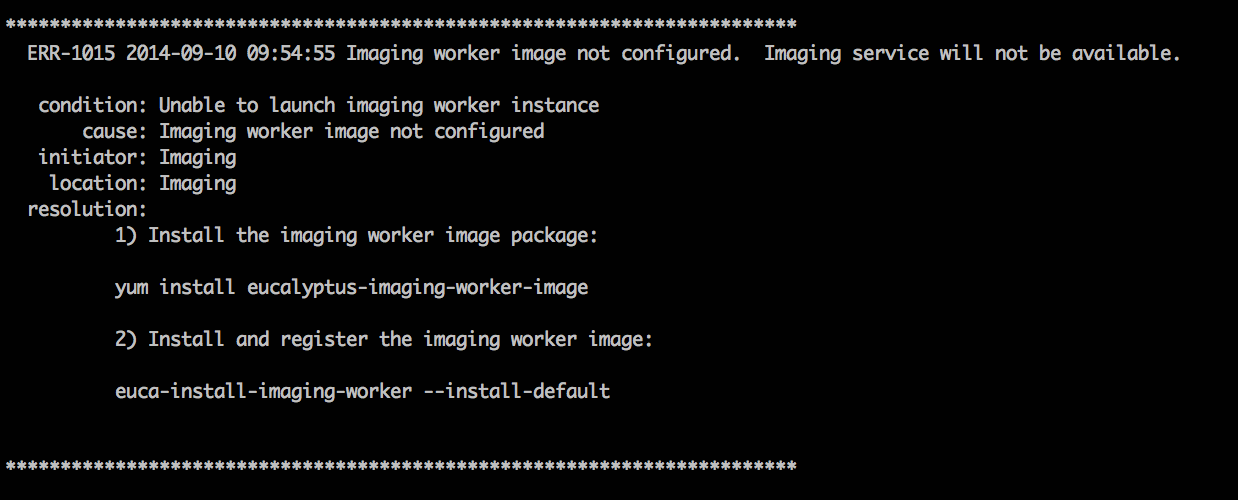Common Problems
This section describes common problems and workarounds.
This is the multi-page printable view of this section. Click here to print.
This section describes common problems and workarounds.
Use ping from a client (not the CLC). Can you ping it?
Yes: Check the open ports on security groups and retry connection using SSH or HTTP. Can you connect now? Yes. Okay, then. You’re work is done. No: Try the same procedure as if you can’t ping it up front. No: Is your cloud running in Edge networking mode?
Yes: Run euca-describe-nodes . Is your instance there?
No, it is not in Edge networking mode:
Eucalyptus offers installation checks for any Eucalyptus component or service (CLC, Walrus, SC, NC, SC, services, and more). When Eucalyptus encounters an error, it presents the problem to the operator. These checks are used for install-time problems. They provide resolutions to some of the fault conditions.
Each problematic condition contains the following information:
| Heading | Description |
|---|---|
| Condition | The fault found by Eucalyptus |
| Cause | The cause of the condition |
| Initiator | What is at fault |
| Location | Where to go to fix the fault |
| Resolution | The steps to take to resolve the fault |

For more information about all the faults we support, go to https://github.com/eucalyptus/eucalyptus/tree/master/util/faults/en_US .
Run euca-describe-nodes to verify if instance is there. Is the instance there?
Yes: Go to the NC log for that NC and grep your instance ID. Did you find the instance?
No: Go to the CC log and grep the instance ID. Is it there error message?
Yes: The error message should give you some helpful information.
No: grep the instance ID in cloud-output.log . Is there error message?
No: Log in as admin and run euca-describe-instance . Is the instance there?
On the SC, depending on the backend used for storage:
Yes: On the OSG host, depending on the backend used for object storage:
For Walrus, use the command to check the disk space in .
For RiakCS or Ceph-RGW, use its specific commands to check the free space for storage allocated for buckets and objects. Is there enough space? Yes.
Use and note the IP addresses for the OSG and SC.
SSH to SC and ping the OSG. Are there error messages?
No: Delete volumes or add disk space. No: Delete volumes or add disk space.
Symptom: Went from available to fail. This is typically caused by the CLC and the SC.On the SC, use df or lvdisplay to check the disk space. Is there enough space?
Yes: Check the SC log and grep the volume ID. Is there error message? Yes. This provides clues to helpful information. No: Check cloud-output.log for a volume ID error. No: Delete volumes or add disk space.